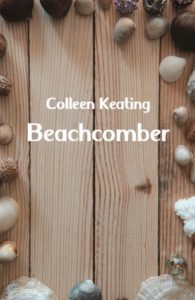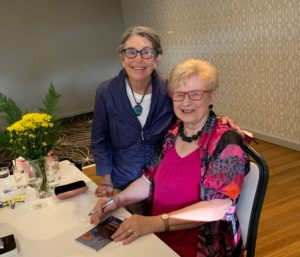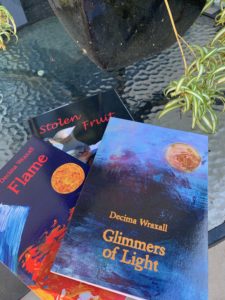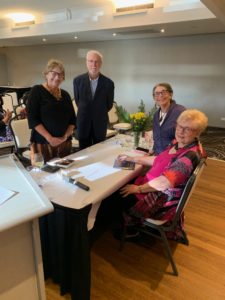
Our recent visit to the Museum of Contemporary Art with a new exhibition on recent Indigenous Art.
This full wall mural was the one i kept returning to. It made me feel so much joy and every visit I learnt something new and yet it is about a desperately sad story. Uranium Mining is threatening their homeland. Hence there is fear, stress, worry and powerlessness as it has happened before.
The map is unlike a Western Map which depicts a linear idea of a place . This map depicts water –underground, shows geography, culture, seasons, biodiversity, environment, fragility, beauty of the land and our interdependence on the it.
Kalyu 2014
“We painted to save it from the uranium mine . . . and to tell them there is underground stream. There’s no water on the surface to keep the dust down. That’s why we painted this big painting – to tell them and to teach others about the water system in our land “
–Ngalangka Nola Taylor, 2014
This extraordinary painting depicts a vast area in the Pilbara region of Western Australia that encompasses the Martu Aboriginal communities of Parnngurr and Punmu,
and represents the Martu Native Title detemination area in its entirety.
Painted by nine artists from Parnngurr, it reflects the Martu people’s intimate knowledge of their desert country.
The work is a map in the most expansive sense.
Representing the landscape from below the ground to above the surface.
It brings together aspects of geography,
cultural knowledge
and seasonal time.
Through careful sequenced layers, the painting documents
the fragile, interdependent relationship
between different environmental elements,
indicating how the hidden underground waterways (kalyu) play
a vital role in the biodiversityof the areqa.
Kalyu was made in protest against uranioum mining exploration taking place on the edge of Karlamilyi National Park, which continues today. The national park is exempt from the 2002 Martu native title determination yet is considered by the artists to be
the ‘heart of martu Country’.

My poem written many years ago but still relevant today.
ghost of terra nullius
(in the search for a nuclear waste dump)
i arrived at Newtown community centre
free coffee plenty of flyers lots of chatter
and then sat as a welcomed outsider
beckoned by an email that plucked the right chord
(amidst all the other vibrations including
marine parks fracking dumping our reef)
a woman from Muckaty country stood
quoted a prominent politician
why on earth can’t people in the middle of nowhere
accept low and intermediate level waste
and then she faced us
unfortunately the already converted
and she answered his question
this is not nowhere mister politician
this on your Canberra map might look remote
and empty
out of sight out of mind
this is not uninhabited space
this is somewhere a sacred somewhere
we are here in this back of beyond
our ancestors breathe and live in the red dust
we are the land our dreaming
our journey our story
this land is our song
the journal we write
the pictures we paint
this red earth is home to our people
creator and creation
no separation for us
do not come here mister politician
treading this desert
puts red soil on the soles of your shoes
and you wouldn’t want that
red dust gets into your soul
makes you feel somewhere
it might choke you when the wind blows
here our horizon is circular shimmers its mirage
our population is sparse
yes it gives you space
for your uranium dump I hear you say
but we have reason to revolt at ignorance
maralinga jabaroo and we hear of chenobyl
maybe just words to you
our song is our blood poured forth
our hearts pound for our children
for us life is timeless
for you I sense a rage of time
but we have our animals and our food
we have our water our soil
our precious billabongs and springs
they are not for your contamination






























